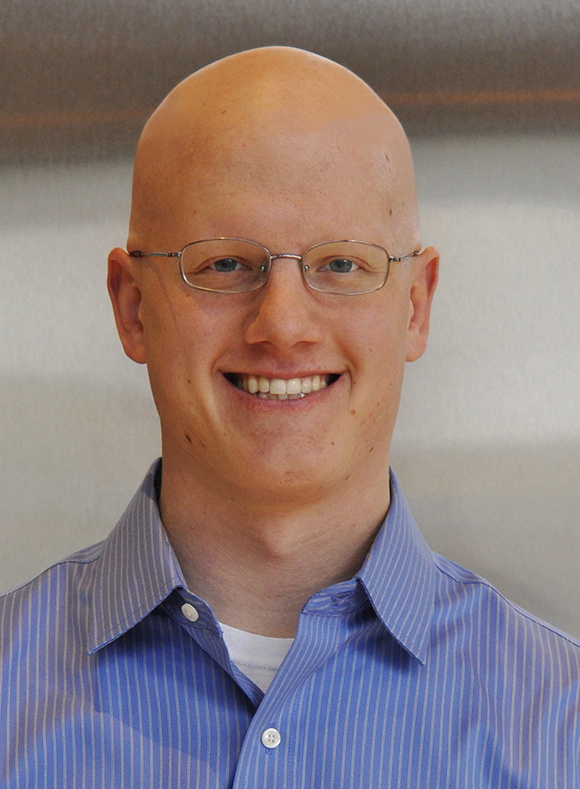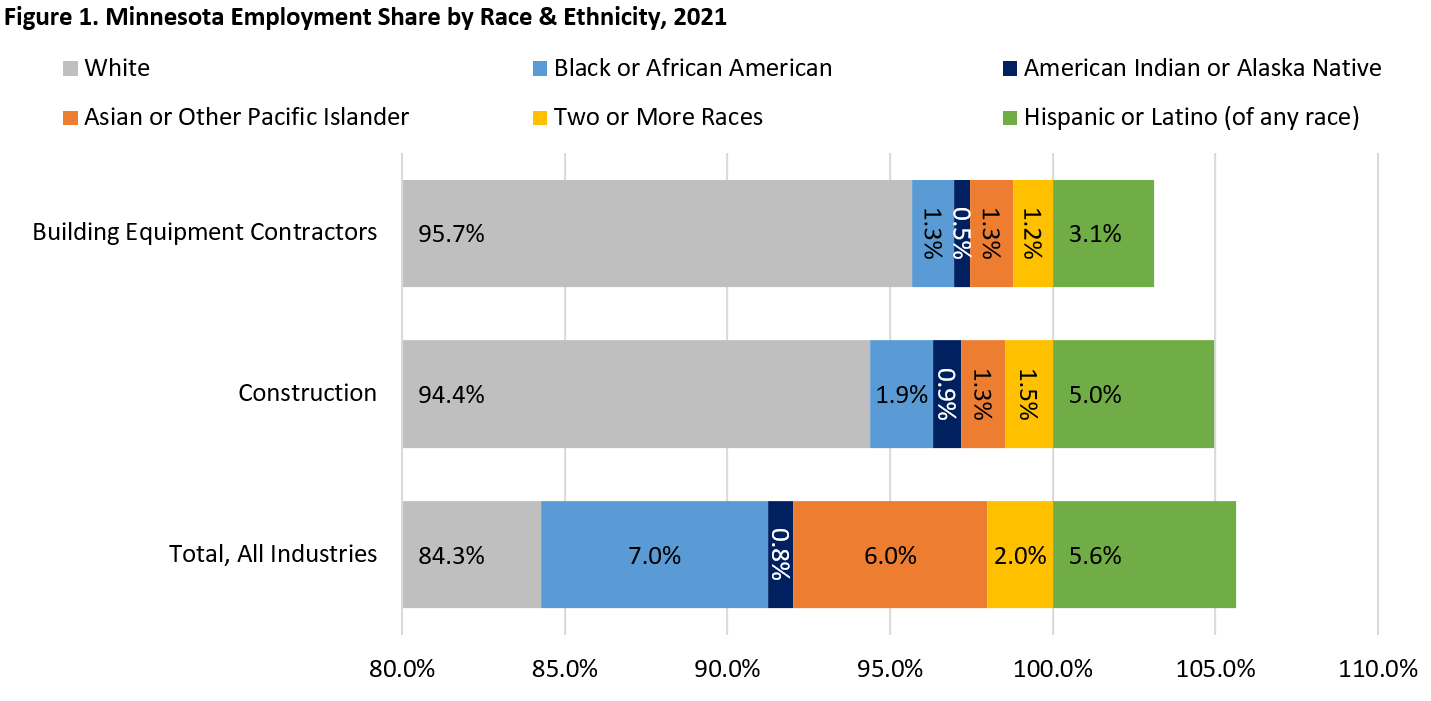 Building Equipment Contractors in MN: Employment Trends by Race and Ethnicity
Building Equipment Contractors in MN: Employment Trends by Race and Ethnicity
Contributed by Tim O'Neill, MN DEED
Recent workforce blogs have focused on total employment within Electrical Contractors and the larger Building Equipment Contractors industry sectors in MN. Data from the U.S. Census Bureau’s Quarterly Workforce Indicators (QWI) tool allows one to analyze employment by age, gender, educational attainment, and race and ethnicity. This time around, we’ll take a quick look at Building Equipment Contractors employment in Minnesota by race and ethnicity.
As of annual 2021, there were approximately 40,980 private sector Building Equipment Contractors jobs in the state. Of these, 95.7% were held by those reporting as white and 4.3% were held by those reporting as a race other than white. For reference, 5.6% of Construction jobs were held by those reporting as a race other than white, while 15.7% of total jobs across all industries were held by those reporting as a race other than white (Figure 1).
Zooming in, 1.3% of Building Equipment Contractors jobs in Minnesota in 2021 were held by those reporting as Black or African American, 0.5% were held by those reporting as American Indian or Alaska Native, 1.3% were held by those reporting as Asian or Other Pacific Islander, and those reporting Two or More Races held 1.2%. Additionally, those reporting Hispanic or Latino origins accounted for 3.1% of MN's Building Equipment Contractors jobs in 2021.
Such employment is becoming more diverse with time. For example, the number of Building Equipment Contractors jobs held by those reporting as Black or African American increased from 175 in 2010 to 415 in 2015 to 534 in 2021. Similarly, such jobs held by those reporting as Asian or Other Pacific Islander increased from 169 in 2010 to 287 in 2015 to 547 in 2021.

Source: Quarterly Workforce Indicators.
Tim O’Neill is DEED’s labor market analyst for the 7-county Twin Cities region. He focuses on labor force and industry trends, regional demographics, hiring demand, and educational outcomes. He has a bachelor’s degree in history and political science from St. Olaf College and a master’s degree in public policy from the Humphrey School of Public Affairs at the U of M.